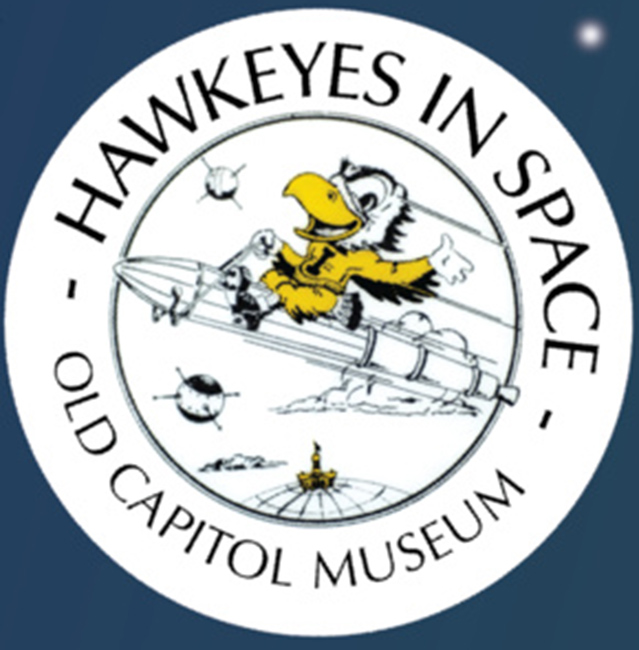 The Old Capitol Museum on the University of Iowa campus is hosting a blockbuster exhibition celebrating the University of Iowa's place in the history and future of space exploration and science. Called "Hawkeyes in Space," the exhibition will run in the museum's Hanson Humanities Gallery from September 8, 2016, until May 2017. Plan your visit.
The Old Capitol Museum on the University of Iowa campus is hosting a blockbuster exhibition celebrating the University of Iowa's place in the history and future of space exploration and science. Called "Hawkeyes in Space," the exhibition will run in the museum's Hanson Humanities Gallery from September 8, 2016, until May 2017. Plan your visit.
The Department of Physics & Astronomy at the University of Iowa has played a substantial role in the development of space science research, ranging from the late James Van Allen's early Rockoon experiments and the discovery of Earth's radiation belts with Explorer 1 through present-day spacecraft such as Voyager, MAVEN, and the Van Allen Probes. This exhibition will highlight the role that the department, and by extension the state of Iowa, has played in these developments.
The exhibition will have three main components:
"Hawkeyes in Space" is expected to draw significant crowds, and will be on display in the Old Capitol Museum for an entire academic year, until May 2017. A first-year seminar, taught by Physics & Astronomy Professor Cornelia Lang, centers around the exhibit.
For more information, contact Professor Cornelia Lang of the Department of Physics & Astronomy.
- History and Legacy of Space Exploration at the University of Iowa: This portion includes historical artifacts that the department has collected from decades of space science research, such as rocket components, scientific instruments, and photographs, with an emphasis on the contributions of Professor Van Allen and his colleagues.
- The Physics of Space: This section of the exhibition focuses on the basic physical processes that underlie the phenomena that are observed by spacecraft. These processes include: magnetism, formation of the Van Allen Belts, and formation of aurora. Questions that will be answered with interactive displays include: “What is a magnetic field?” “How is a charged particle in space affected by a magnetic field?”, “How are the Aurora formed?” A planeterrella device (showing a model for the plasma radiation around the Earth) has been constructed by University of Iowa Professor Scott Baalrud and will be on display in the gallery.
- Current Space Science Research: This part of the exhibition features current space and astrophysics research carried out by faculty and staff in the Physics & Astronomy Department. It includes space-based instrument projects, including University of Iowa principal investigator instruments on MAVEN, Van Allen Probes, Juno, and others currently exploring the Solar System, and features audio, video, and data clips from relevant University of Iowa research teams. It also highlights the contributions of UI undergraduate students.